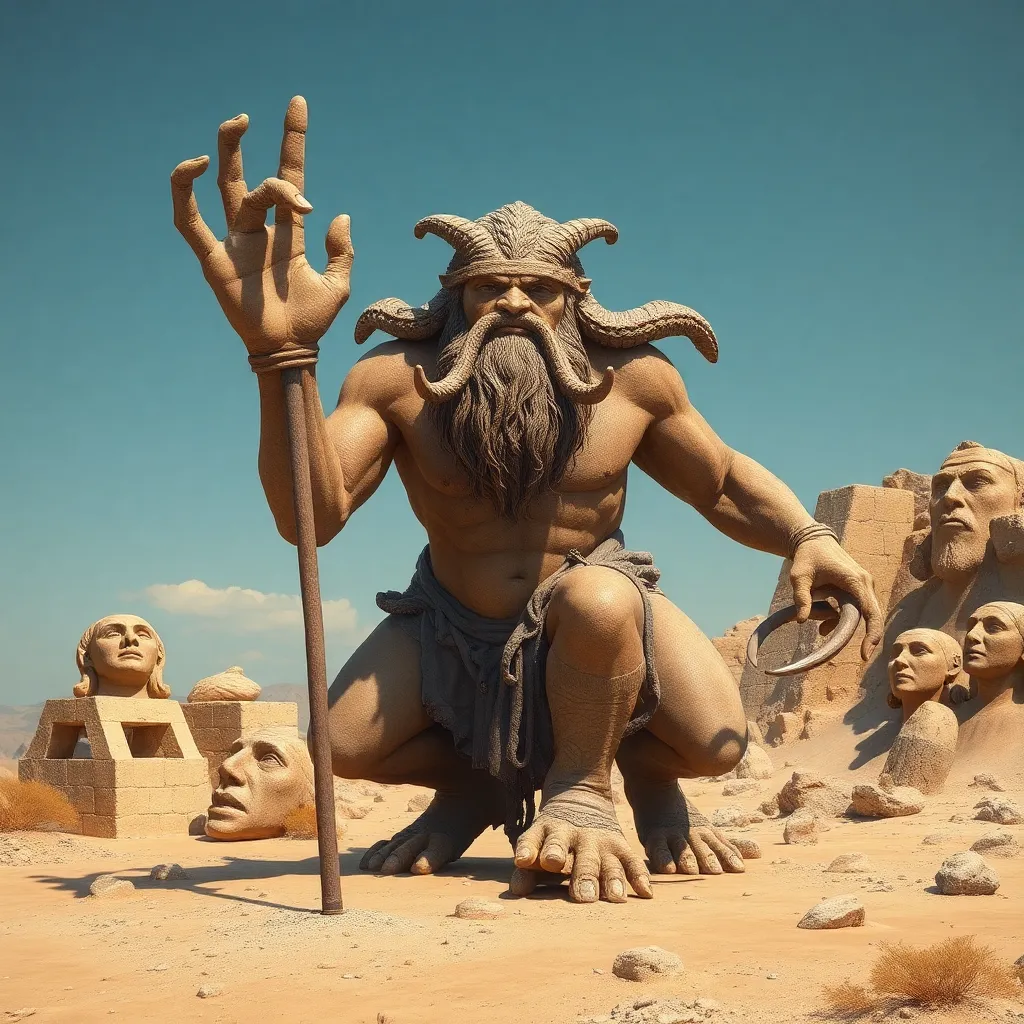Cyclopes in Literature: From Homer to Contemporary Works
I. Introduction
The Cyclopes are one-eyed giants from Greek mythology, often regarded as fearsome creatures who embody primal strength and savagery. Their significance extends beyond mere physical attributes; they represent themes of isolation, monstrosity, and the complexities of the human condition. This article explores the journey of Cyclopes through literature, from their origins in ancient texts to their manifestations in contemporary narratives.
In this exploration, we will examine various literary works that feature Cyclopes, analyzing their roles and the evolving interpretations of these mythical beings. Understanding the Cyclopes in literary contexts provides insights into cultural attitudes toward monstrosity, humanity, and the nature of existence itself.
Studying Cyclopes in literature allows us to appreciate their relevance in understanding human experience and the broader themes that resonate through time.
II. The Origin of Cyclopes in Greek Mythology
The Cyclopes first appear in Greek mythology through Hesiod’s “Theogony,” where they are depicted as the children of Uranus (the sky) and Gaia (the earth). Hesiod describes them as formidable beings with a single eye in the middle of their foreheads, known for their extraordinary strength and craftsmanship.
In Homer’s “Odyssey,” the most famous Cyclopean figure is Polyphemus, who captures Odysseus and his men. This encounter is pivotal in the narrative, showcasing the themes of cunning versus brute strength. Polyphemus is portrayed as both a monster and a tragic figure, struggling with his isolation and the consequences of his actions.
Culturally, Cyclopes symbolize the chaos of nature and the untamed aspects of humanity. Their existence challenges the boundaries between civilization and savagery, prompting reflections on the human condition.
III. The Cyclopean Archetype in Classical Literature
Polyphemus serves as a compelling archetype in classical literature. His character embodies the tension between monstrosity and humanity, illustrating the complexities of moral judgment. While he is a fearsome giant, his loneliness and desire for companionship evoke sympathy.
The themes associated with Cyclopes often include:
- Monstrosity: The physical deformity of the Cyclopes represents the notion of the ‘other’ in society.
- Isolation: Cyclopes are frequently portrayed as solitary beings, highlighting their estrangement from society.
- Humanity: Despite their monstrous nature, Cyclopes often exhibit human emotions and desires.
Comparing Cyclopes to other mythological creatures reveals further insights into their role in literature. Unlike many monsters, Cyclopes possess intelligence and emotional depth, blurring the lines between hero and villain.
IV. Cyclopes in Roman Literature and Beyond
The influence of Greek Cyclopean myths continued into Roman literature, most notably in Virgil’s “Aeneid.” Here, the Cyclopes are depicted as craftsmen who forge thunderbolts for Jupiter, emphasizing their skills and connection to the divine.
Roman authors often adapted Greek myths, reshaping Cyclopes to fit their narratives. This evolution reflects changing cultural values and the integration of Cyclopean themes into broader literary traditions.
As literature progressed, the image of the Cyclopes transformed, influencing various genres and styles, from epic poetry to prose narratives.
V. Medieval and Renaissance Interpretations of Cyclopes
During the medieval period, Cyclopes appeared in bestiaries and folklore, often depicted as representations of evil or chaos. These interpretations were influenced by the prevailing Christian worldview, which viewed monsters as manifestations of sin and moral decay.
The Renaissance, however, saw a revival of classical themes, including Cyclopes. Writers and artists revisited the myths, finding new meanings and contexts. Cyclopean figures became symbols of human folly and the tension between reason and instinct.
This adaptation in art and poetry highlighted the enduring fascination with Cyclopes, as they were reimagined to reflect contemporary concerns and human experiences.
VI. Cyclopes in Modern Literature
In the 19th and 20th centuries, Cyclopes continued to appear in various literary works, reflecting the evolving nature of their symbolism. James Joyce’s “Ulysses” features a modern interpretation of Polyphemus, where the themes of identity and perception are explored through a contemporary lens.
Other notable examples include:
- Ray Bradbury’s “The Martian Chronicles,” where Cyclopean beings represent alienation and the search for belonging.
- Margaret Atwood’s “Oryx and Crake,” which uses Cyclopean imagery to discuss genetic engineering and the nature of humanity.
The thematic relevance of Cyclopes in modern storytelling often revolves around existential questions and the complexity of human relationships, making them poignant figures in contemporary literature.
VII. The Cyclopes as a Reflection of Human Nature
Psychological interpretations of Cyclopes in literature reveal deeper meanings behind their monstrous exteriors. They often symbolize aspects of human nature that society tends to reject, such as isolation, rage, and the desire for connection.
Cyclopes also embody the moral and ethical dilemmas faced by humanity. Their narratives compel readers to confront questions about monstrosity and humanity, challenging preconceptions of what it means to be ‘other.’
Additionally, Cyclopes can represent the consequences of unchecked desires and the struggle between civilization and savagery, serving as a mirror to human nature.
VIII. Conclusion
The journey of Cyclopes through literature illustrates their enduring significance in understanding the human experience. From their origins in Greek mythology to their contemporary representations, Cyclopes embody themes of isolation, monstrosity, and the complexities of identity.
As we explore the legacy of Cyclopes in literature, it becomes clear that these one-eyed giants remain relevant in contemporary narratives, reflecting our ongoing struggles with humanity, morality, and the nature of existence.
In conclusion, the Cyclopes serve not only as fascinating mythological figures but also as profound symbols that invite reflection on the human condition, making them essential subjects for literary study.




